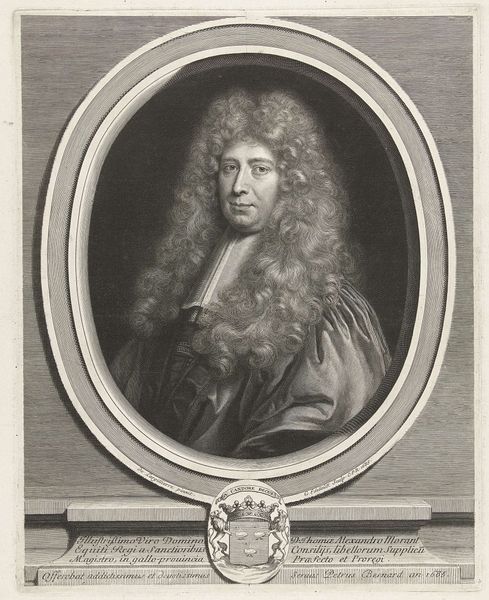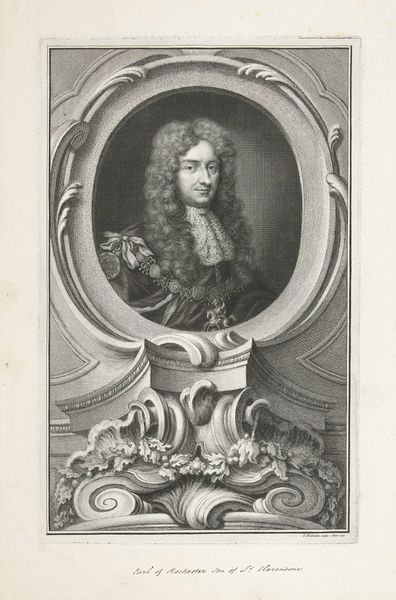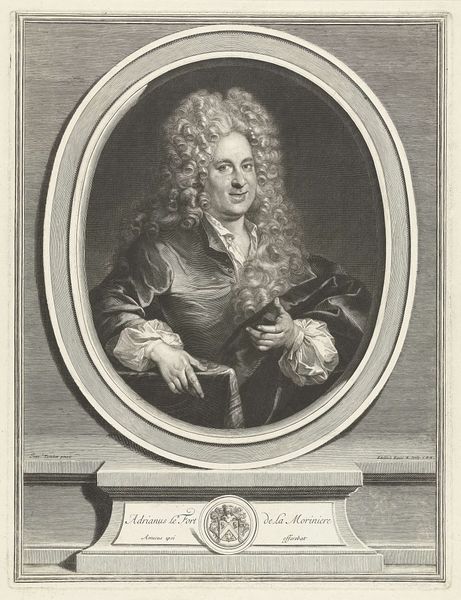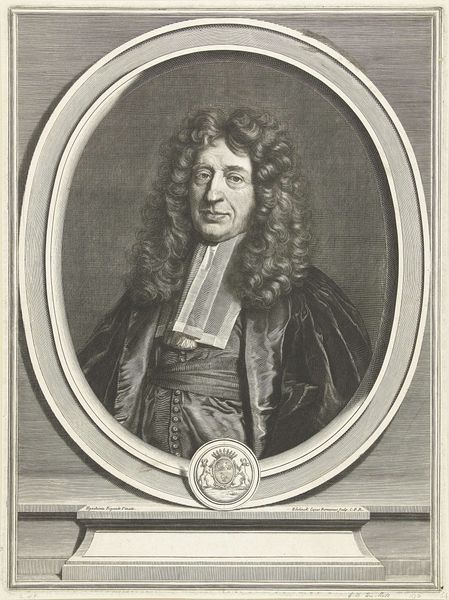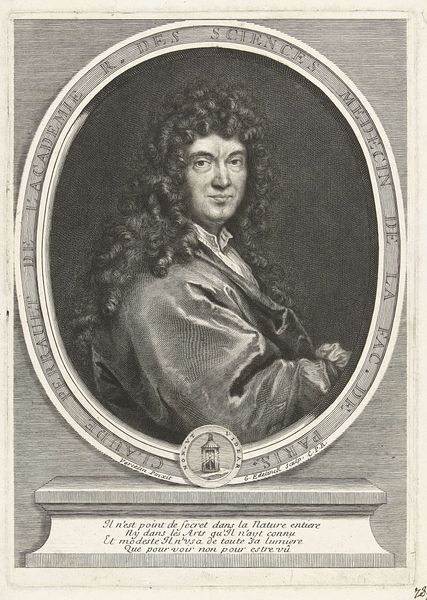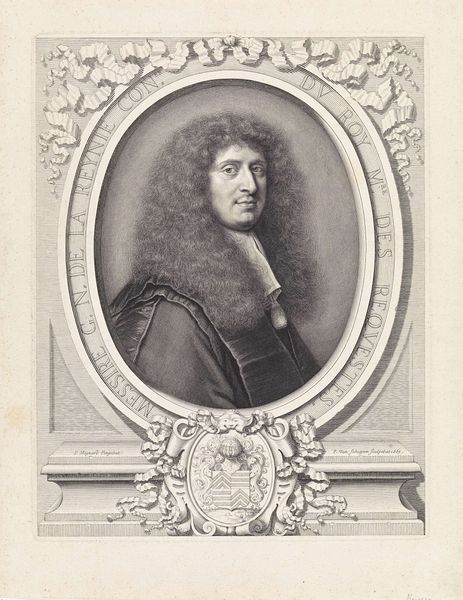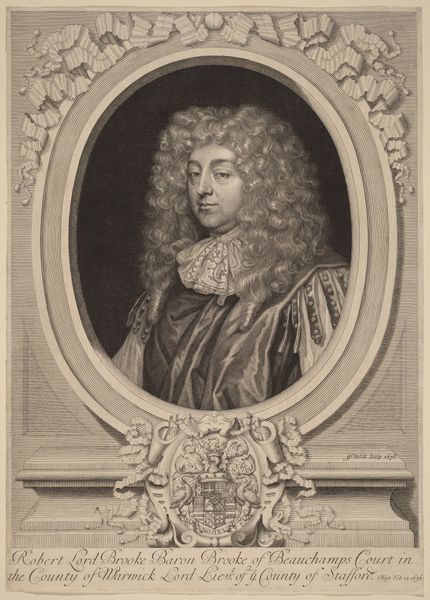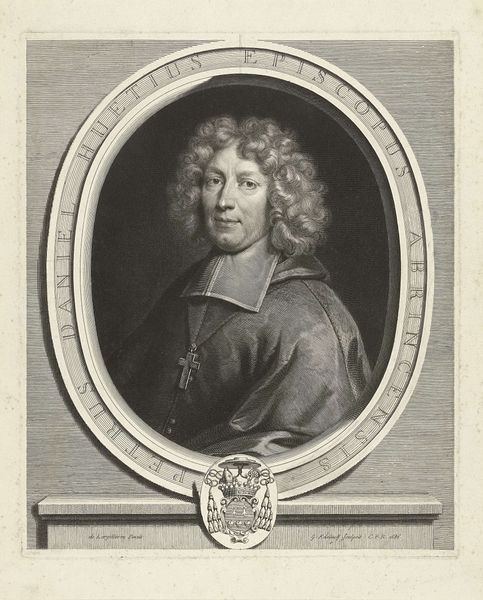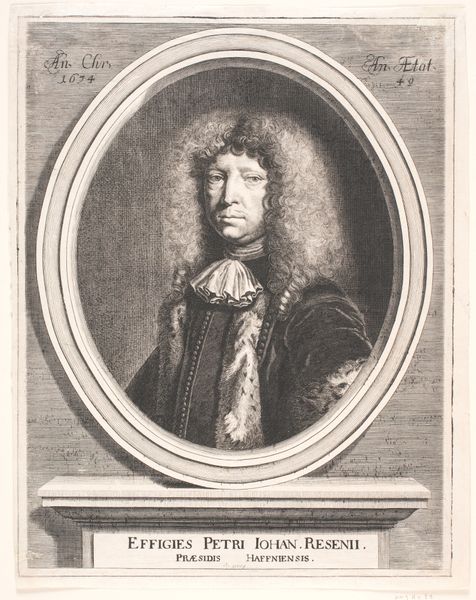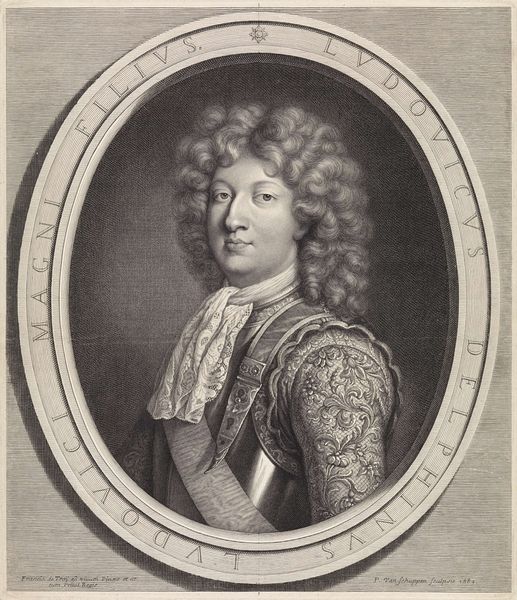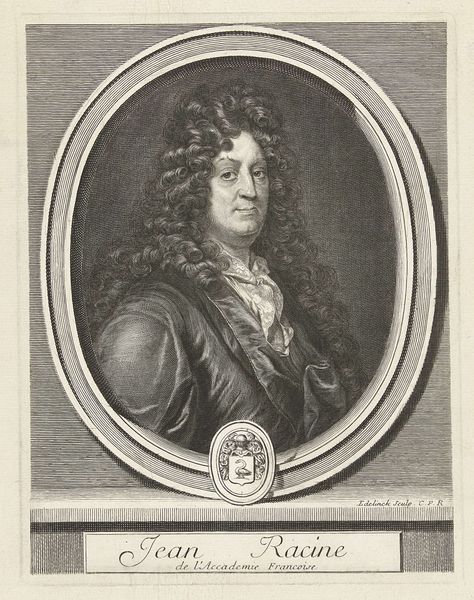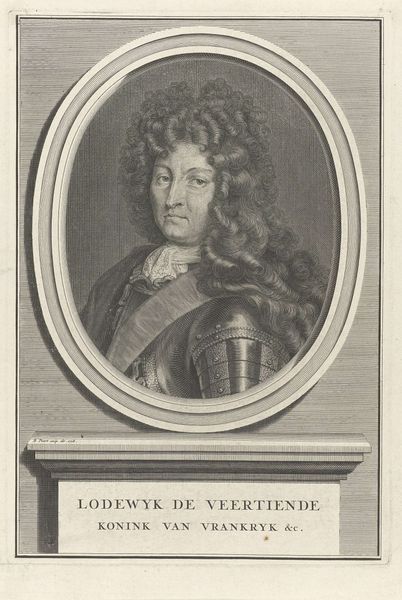
engraving
#
portrait
#
baroque
#
dutch-golden-age
#
charcoal drawing
#
line
#
engraving
Dimensions: height 403 mm, width 323 mm
Copyright: Rijks Museum: Open Domain
Editor: This is Gérard Edelinck’s "Portrait of Michel le Peletier de Souzy," an engraving from 1679. It’s incredibly detailed. What I find most striking is how the artist captures the sitter's gaze, seemingly projecting a certain authority, despite the somewhat florid presentation of status through dress and hair. What do you see in this portrait? Curator: For me, this image speaks volumes about power and its performance during the French Baroque period. Edelinck’s engraving highlights not just the individual, but the social structures that legitimized his status. Note the trappings of wealth – the wig, the clothing, the coat of arms – each meticulously rendered to project an image of established authority. But who did this performance serve, and at what cost? Editor: What do you mean, "at what cost?" Curator: Well, consider the context. The late 17th century was a time of immense social stratification. The elaborate display of wealth by the aristocracy stood in stark contrast to the poverty experienced by much of the population. Portraits like this reinforced a social hierarchy, normalising inequality and solidifying the power of the elite. It’s interesting to think about portraits less as straightforward depictions and more as carefully constructed arguments about social order. How do you think Edelinck's technical skills contribute to this dynamic? Editor: The detail does make it more believable, like it’s an accurate record… almost like propaganda for the elite? Curator: Precisely! And that raises complex ethical questions about the artist’s role in perpetuating these power structures. So, reflecting on this, what have we discovered? Editor: That what seems like a straightforward portrait is actually steeped in social and political messaging. It's more than just a picture. Curator: Exactly. And by examining art through this lens, we gain a deeper understanding of the past and its connection to the present.
Comments
No comments
Be the first to comment and join the conversation on the ultimate creative platform.

